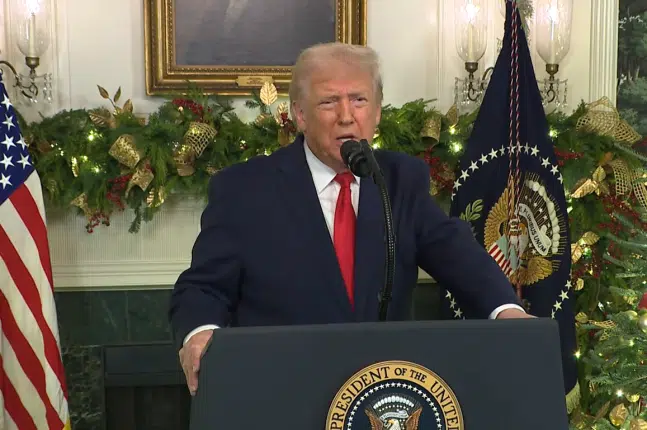While we weren’t paying attention, post-war Iraq grew into a major force in the global oil market. Reaching a 30-year high, its production and exports have climbed steadily since 2011—making Iraq the second largest producer in OPEC, the seventh globally. The International Energy Agency (EIA) has forecast that Iraq has the fifth-largest proven oil reserves.
Just one year ago, Iraq was celebrating its increased production. At a ceremony in Baghdad, Thamir Gladhban, Chairman of the Prime Minister’s Advisory Commission on Energy, touted expected production of 4.5 million barrels per day by the end of 2014. Earlier this year it was announced that “thanks to a small group of international oil companies developing oil fields and infrastructure,” Iraqi oil exports “shot up.” Iraq’s deputy Prime Minister for energy, Hussain Al-Shahristani, reported that average production, including exports, exceeded 3.5 million barrels per day—which he called “unprecedented.”
Iraq’s newfound ability came just in time. Last week, the EIA predicted that global oil demand will rise from 91.4 million barrels per day in 2014’s first quarter to 94 million during the last 3 quarters. Iraq has been able fill in the production gaps caused by violence in Libya and sanctions in Iran. Crude oil prices have been stable. Rebecca Patterson, chief investment officer at Bessemer Trust in New York, said: Iraq “is more important for the oil market than it has been for some time.”
The Wall Street Journal (WSJ) states: “crude volatility recently had ground down to multi-year lows.”
But that low volatility level was before rapid gains by extremist insurgents in northern Iraq put all that progress in jeopardy, raised gasoline prices, and sent “shudders through financial markets.” A barrel of oil is now trading at its highest level since September. WSJ calls the increase “an unwelcome development for the U.S. and other major economies struggling with tepid growth.”
The sectarian fighting in Iraq had already caused a 4 percent increase in world oil prices which is expected to translate to a 5 to 10 cent a gallon bump in the price of regular unleaded gasoline. WSJ reports that “by some estimates, a sustained 10 percent increase in oil prices is believed to shave as much as 0.5 percent off economic growth in a two-year period.”
Most of Iraq’s oil fields are in the south and are, so far, believed to not be at “immediate risk.” Yet, the New York Times (NYT) reports: “The collapse of Iraq would bring an international oil crisis. …It would mean crude oil would go up to $150 a barrel.” WSJ affirms the impact of the mounting unrest which will have “radical implications for oil markets at a time of growing lost production worldwide due to intensifying disorder in a growing number of petroleum-producing counties.”
“But,” NYT continues, “Oil prices have been rising modestly compared with what would be expected from a major crisis in the Middle East.” Why? According to the NYT, “growing oil production in the United States and Canada has helped cut American oil imports, helping to keep global supplies hardy.” The report states: “World oil supplies are relatively robust at the moment, which explains why oil price increases have not been significant. Global supplies are up a million barrels a day from a year ago, mostly because of North American production.”
Edward Morse, head of commodities research at Citigroup, States: “By itself, Iraq’s turmoil may have limited impact, but coinciding with Russia’s annexation of Crimea and Libya’s instability, it points to a systemic and seismic shift geopolitically.”
If Iraq’s production continues to be threatened, as it looks like it will, John Kingston global news director for industry tracker Platts Energy, asks the obvious question: “who is going to fill the gap?”
The obvious answer should be the United States—after all, North American production is credited with keeping prices relatively stable compared with what would normally be “expected from a major crisis in the Middle East.”
Unfortunately, President Obama has turned a blind eye to the unrest in Iraq—despite the fact that militants attacked and crippled a key oil export pipeline in northern Iraq a few months ago. He has chosen to cling to the White House narrative, claiming: “The world is less violent than it has ever been.” As a result, he has failed to protect America’s economic security. He could have helped cut America’s dependence on Middle Eastern oil—about 300,000 barrels of Iraqi oil are used in the U.S. each day. Instead he has listened to his environmental base that opposes all fossil-fuel development and he has presided over a decline in production on federal lands.
While U.S. production has helped blunt the short-term impact of the Iraq conflict, a recent report from the Congressional Research Service (CRS) “quantifies the Obama administration’s hostility towards America’s oil and natural gas industry,” Chris Prandoni said recently in Forbes. Prandoni continues: “a fair way to judge the Obama administration’s stance towards oil and natural gas is to compare federal production to state and private land production. According to the CRS report, oil production on federal lands actually fell 6 percent between 2009 and 2013. Over the same period of time, oil production increased by an astounding 61 percent on state and private lands.” The Daily Caller reports: “federal lands and waters hold about 43 percent of all domestic oil reserves and 72 percent of oil shale acreage.”
Addressing the CRS findings, Tim Wigley, president of the Western Energy Alliance, says: “The CRS report clearly shows that where the federal government has the most control, on federal lands, it is suppressing development of the energy that all Americans own while preventing job creation and economic prosperity.”
One of the ways energy development is suppressed on federal lands is through an excessively laborious permitting process. The CRS found that it takes 41 percent longer to process an application for permit to drill in 2011 than it did in 2006. Getting a permit on federal lands takes an average of 194 days compared to a few days to a month on state lands. The Obama administration approved the fewest drilling permits since 2002. Additionally, it has sold the lowest amount of oil-and-gas leases since 1988. As a result, U.S. oil production on federal lands has fallen to a five-year low. Pandoni quotes Congressman Steve Scalise (R-LA), vice-chairman of the House Energy and Power Subcommittee: “America can secure energy independence by developing all of our energy resources on both federal and non-federal lands. Unfortunately the Obama administration has turned its back on energy exploration on federal lands, costing us hundreds of thousands of good paying jobs and billions in potential federal revenue.”
Putting oil-and-gas development on federal lands into a “free fall,” as the Daily Caller refers to the Obama policy, is just one way the White House has made America vulnerable to oil market instability. Blocking the Keystone pipeline is another. Had it been approved as originally expected more than five years ago, it could now be bringing additional resources to market and helping stabilize supplies and filling the gap created by unrest in Iraq.
It is time to realize that the altruistic-sounding claims of environmental lobbyists do not have America’s interests at heart.
Germany is often touted as the country to follow when it comes to energy policies as it initially led the way in wind-and-solar implementation. Yet, Germany has faced high energy costs resulting in higher electricity prices, has lost jobs, and has seen an exodus of investment capital as a result of its costly shift to so-called renewable energy. According to the Financial Times (FT), a recent report found that “Germany’s exports would have been €15bn higher last year if its industry had not paid a premium for electricity compared with international competitors.” In January, the FT cited Germany’s finance minister as saying: “Germany may have gone too far in its attempts to protect the environment,” and that the government must now “rebalance its policies to ensure environmental regulations do not cost jobs.” Sigmar Gabriel, economy and energy minister, warned: Germany has “reached the limit of what we can ask of our economy.” The January 28, 2014 FT article concludes that a “rolling back of existing regulations was in order.”
But it was the realization that Germany must reduce its dependency on Russian energy that has prompted Chancellor Angela Merkel to prepare a framework for developing new sources of fuel—shale gas extracted through hydraulic fracturing. The NYT reported on June 5, 2014: “The Federal Natural Resources Agency, a government organization, has estimated that Germany has 2.3 trillion cubic meters, or 81 trillion cubic feet, of shale gas, enough to supply domestic consumption for about 30 years.” Though not widespread, hydraulic fracturing has been used for years in Germany, but was stopped because of recent rules that gave Germany time to evaluate concerns carried over from the U.S. controversy. The new legislation is expected to be discussed by the cabinet before the summer recess and put to a vote in Parliament by the end of the year.
The NYT states: “Opposition to fracking is strong in Germany… Some environmental groups are flatly opposed to shale gas and oil as a new source of fossil fuels that might detract from investment in renewable energy sources.” Yet, the NYT says: “The government is responding to pressure … to develop new sources of fuel and reduce Germany’s dependence on gas imported from Russia.
In a letter to Merkel, commending her for efforts to lift Germany’s ban on hydraulic fracturing, Senator Vitter (R-LA), top Republican on the Environment and Public Works Committee, warned about environmental activist attacks: “While Germany takes this critical step forward to reduce dependence on Russian energy resources, and bolster its competiveness internationally, inaccurate portrayals of the risks associated with this production technology will inevitably be circulated. For over 60 years, the United States has conducted hydraulic fracturing safely and effectively. Today, newer technologies in this process are providing significant economic opportunity and remain one of the bright spots in our economy.” Vitter concludes: “I do believe the decision to lift the ban on hydraulic fracturing will be both environmentally and economically beneficial. If the resources are utilized appropriately, lifting the ban will result in beneficial electricity rates for your citizens while providing the feedstock for your manufactured goods.”
In Germany, leadership is bucking environmental opposition and looking to its shale gas potential to lift its dependence on Russian natural gas—but it took aggressive action from Russia to wake Germany up from its expensive, green-energy nightmare.
In the U.S., the silver lining of the black cloud over Iraq could be a renewed public awareness of the importance of developing our own energy resources. With his phone and his pen, Obama could increase access and expedite drilling on federal lands. He could approve the Keystone pipeline. As Merkel has done, he could come out with a strong statement in favor of fracking and the benefits it provides. But that would require standing up to his environmental allies like billionaire Tom Steyer—something he’s not likely to do.
In Germany it took pressure from industry and consumers to bring about a change in policy and Merkel was receptive to doing what was best for her country. In the U.S., pressure from our citizens is less likely to have an impact on an ideologically driven lame-duck president. But Congress should hear from us. And we can vote in November. A Republican controlled Senate, along with a Republican House, can make some changes that Obama is unwilling to consider: economic security, energy production, job creation, and lower costs.
The author of Energy Freedom, Marita Noon serves as the executive director for Energy Makes America Great Inc. and the companion educational organization, the Citizens’ Alliance for Responsible Energy (CARE). Together they work to educate the public and influence policy makers regarding energy, its role in freedom, and the American way of life. Combining energy, news, politics, and, the environment through public events, speaking engagements, and media, the organizations’ combined efforts serve as America’s voice for energy.







